Monastery of Agia Triada | Vrontou
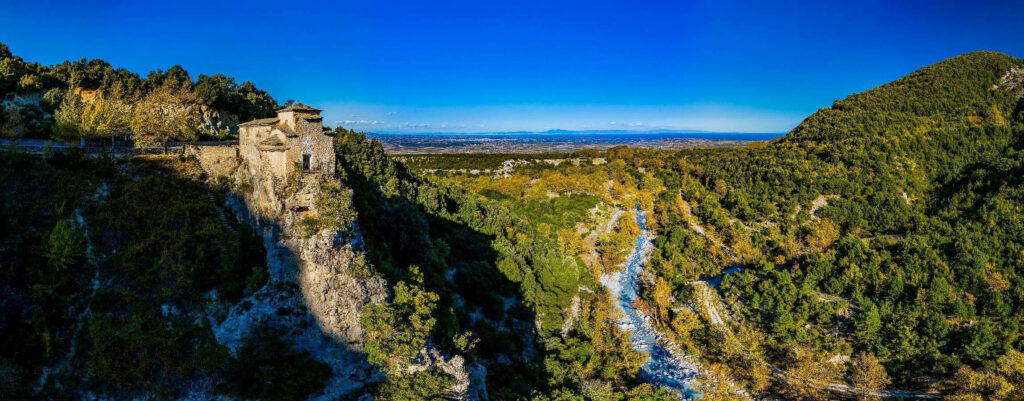
In a rocky cavern, near the monastery of Agia Triada in Vrontou, there is the chapel of Agia Kori, where there is also a spring-holy water, surrounded by an impressive scenery of shady trees.
Church of Agia Kori | Vrontou
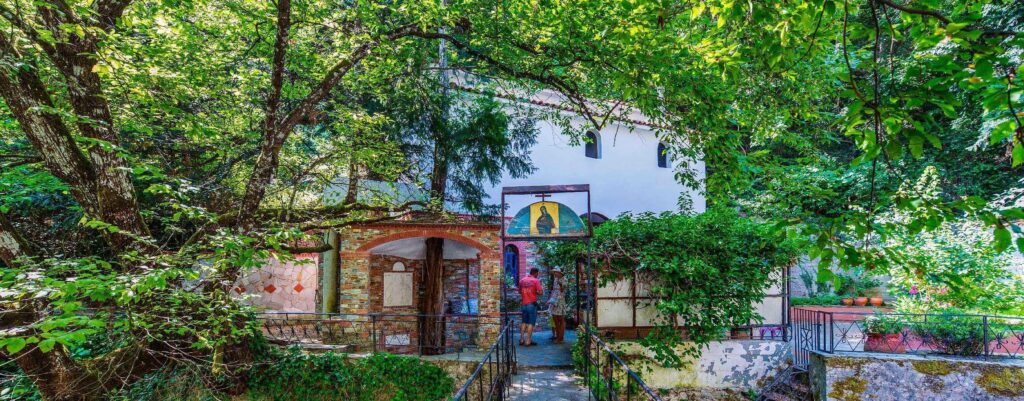
In a rocky cavern, near the monastery of Agia Triada in Vrontou, there is the chapel of Agia Kori, where there is also a spring-holy water, surrounded by an impressive scenery of shady trees.
Church of the Dormition at Kontariotissa
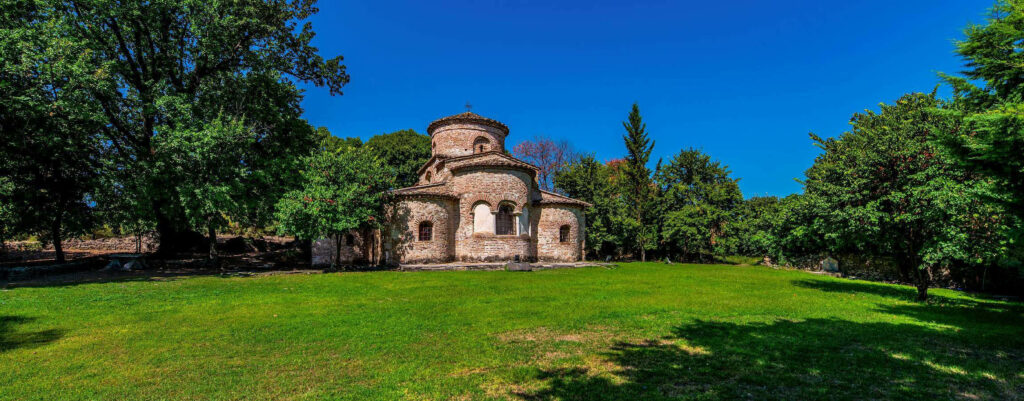
The byzantine church of Theotokos Kontariotissa or Kountouriotissa, overlooking the village named after it, was built in the beginning of the 11th century and is one of the most significant byzantine monuments in Macedonia. Its architecture resembles that of the Agia Sofia church in the city of Thessaloniki; it has a cross-shaped dome surrounded by a gallery and two chapels on the north and on the south side respectively. Inside, there are remainings of murals dating back to the late 15th or early 16th century.
Only a few kilometres away from Panagia Kontariotissa, there is the modern monastery of Agios Efraim one of the most visited monasteries by Greek Christians.
Church of Panagia | Pythio
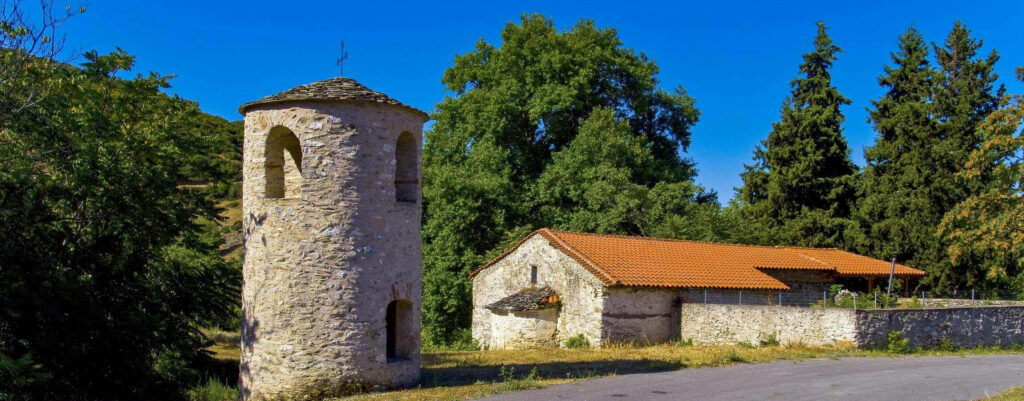
The church of Panagia at Pythio is a three-aisled basilica with a wooden roof, built in 1638. The church used to function as a monastery and is decorated with lovely murals. It is unique in that it has the only cyclical bell tower in Greece.
Profitis Elias peak
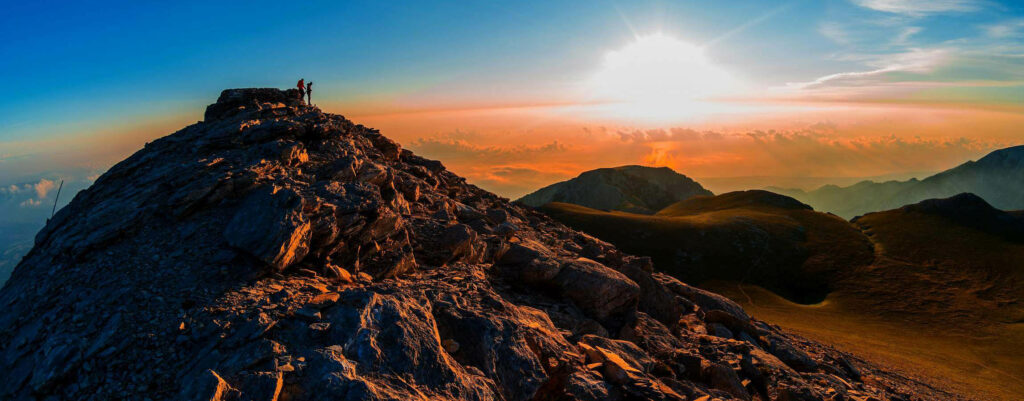
The highest worship place of Greece is the stone tabernacle of Profiti Elia on the so-called peak of Olympus, at 2.803m height. It is a small, one-space church which, according to the tradition, was built by St. Dionysus in the 16th century, and every July, on the celebration day of the Prophet, monks of the neighbouring monastery go up to the peak and have a Mass. Although no archaeological relics have been found, it is believed that the church was built on an ancient top sanctuary, as there was one on the opposite peak of St. Anthony.
Castle of Platamonas
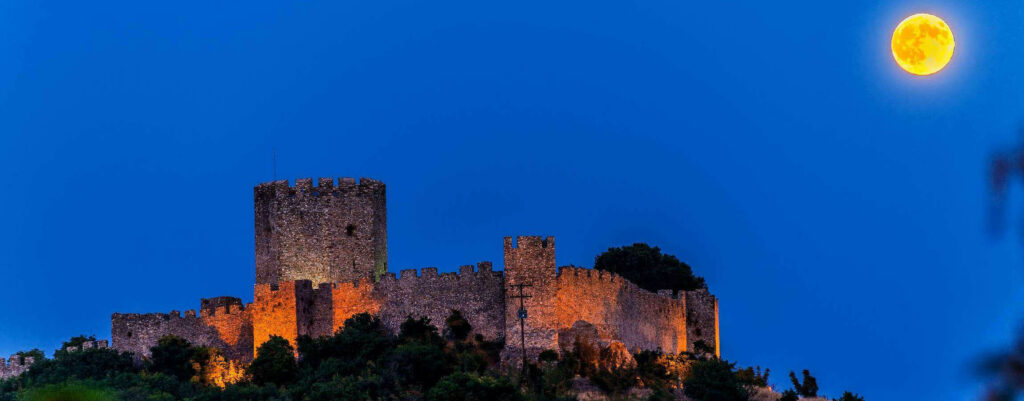
Platamon Castle, dating back to the mid-Byzantine period (10th century), was built over the grounds of the ancient city of Heraklion and was restored by the Franks after 1204, the Byzantines during the 14th century, and the Turks.
It is one of Greece’s best-preserved castles consisting of a defensive stone-wall and an octagonal fortress tower. Recent excavations have revealed a Byzantine church, dating between the 10th and the 11th century, houses belonging in the same period, an 18th century chapel, as well as storage spaces and a part of the wall from the Hellenistic period (2nd century B.C.)
Controlling the passages of Olympus towards southern Greece, Platamon Castle was targeted by many foreign conquerors, but, also, by Greek revolutionists during 1821. It is open to visitors during the hours provided for archaeological monuments. During summer, it hosts many of the events organized within the context of the Olympus Festival.